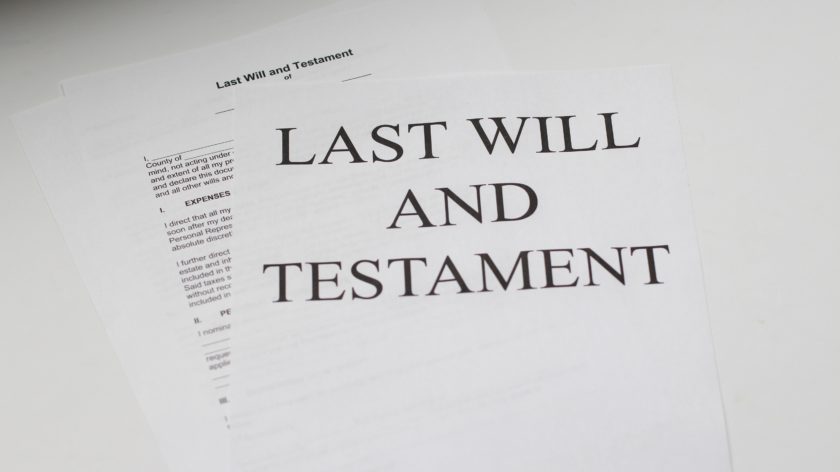Clients can pass on their pension assets to a beneficiary of their choice on their death in a number of ways but keeping expression of wishes forms and wills up-to-date is essential, as Damien Bowler, pensions technical manager, Curtis Banks, explains.
A family bereavement can be challenging for all parties involved, and the last thing anyone wants when mourning a loved one is to unravel their estate and pension intentions. These are difficult conversations that many people avoid, but failing to address them in advance can lead to unintended outcomes where benefits are not paid as the deceased would have wished.
Effective planning is crucial, and a pension should be considered alongside a will. Some individuals may choose to provide for loved ones in their will, paid through their estate, while others may decide to allocate provisions via their pension. This decision depends on the client’s wishes and also effective tax planning.
So what should clients consider during their lifetime to plan for their beneficiary? And what do potential beneficiary need to think about?
With a pension, it is possible to mitigate potential IHT charges. Assets distributed via a will form part of the deceased estate and would usually be subject to IHT. But, with a pension the assets can be passed on to a beneficiary free from inheritance tax. This is because the assets held within the pension generally do not form part of the individual’s estate for inheritance tax purposes.
Clients must create and regularly update an expression of wishes (EOW), especially in the event of significant life changes such as marriage, divorce, or the birth of children. An EOW states who they would choose to receive the remaining pension assets upon the client’s death. The client can specify one or more beneficiary and define the proportions in which the assets will be distributed.
While an EOW is not binding and the final discretion lies with the pension trustees, this serves as the strongest indicator of the client’s desired distribution of pension assets, underscoring the importance of keeping it up to date.
Avoiding contradictions
While a pension allows the client to directly nominate a beneficiary, it is still essential to have an up-to-date will in place. It’s important to ensure that the will does not contradict the expression of wishes to avoid unintended complications. Where a contradiction arises it would be down to the trustees to try and decipher the client’s intentions, the problem being that their decision might not be what the client had intended.
Although pensions are generally exempt from IHT, there may still be situations where HMRC considers whether a transfer of value has occurred. A transfer of value is a legal term used when considering IHT upon someone’s death. This could arise in a pension due to a client knowingly contributing or transferring their pension whilst in ill-health and subsequently passing away within two years. Should this scenario arise HMRC could scrutinise this situation and tax charges could apply as a result.
The tax treatment of pension assets upon death depends on various factors, such as the age of the pension holder at the time of death and whether the pension has been accessed or remains untouched. Understanding the potential tax implications is crucial for optimising tax efficiency.
If the pension holder passes away before the age of 75 and the death claim is settled within two years, the beneficiary inheriting the pension assets can make tax-free withdrawals. They can generally choose to receive a lump sum or opt for beneficiary drawdown.
If the pension holder passes away after 75 or if the death claim takes longer than two years to settle (for example, due to contested nominations), the beneficiary may still have the option to take beneficiary drawdown. However, tax will be charged at the beneficiary’s marginal rate, whether withdrawn as a lump sum or through beneficiary drawdown.
Changes to the lifetime allowance
It’s worth noting that changes to the lifetime allowance announced in the budget this year have raised questions about the taxation of excess lump sums above the lifetime allowance. Although the lifetime allowance remains for the 2023-2024 tax year, the excess lump sum tax charge has been removed. Instead, a beneficiary will pay tax at their marginal rate paid directly to HMRC, reducing the potential tax burden previously incurred.
It is worth noting that this tax payment will be the responsibility of the beneficiary and will not form part of the trustees responsibilities in settling a death claim.
There may also be situations where clients want or need greater control over the funds once they have died, such as when the chosen beneficiary is incapable of managing the funds themselves or when the client wants specific control over how the funds are used. In such cases, a trust can be nominated, but it needs to be established separately and specified in the expression of wishes. The pension trustees will not establish the trust, so if this is not planned for, the trustees may have to exercise discretion regarding the distribution of funds due to the lack of a designated trust.
Discussing topics related to death and planning for the future may be uncomfortable, but it is crucial to have these conversations with clients. By helping them visualise the process, understand the tax treatments, and emphasise the significance of future planning, they can make informed decisions and comprehend the implications of their actions or inaction.
It is crucial to remember that EOW are vitally important in ensuring that a beneficiary have all available options to them. To avoid potential problems, clients should maintain a robust and up-to-date expression of wishes that truly reflects their intentions. Moreover, ensuring that all involved parties are aware of the client’s wishes can significantly reduce the likelihood of complications arising from disputes among potential beneficiaries.




























